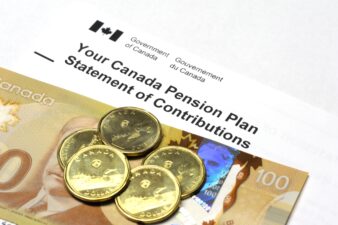It was only last week when integrated energy giant Suncor Energy Inc (TSX: SU)(NYSE: SU) reported a shocking 69% profit plunge for the second quarter 2014. This led to concerned grimaces from a number of investors and analysts.
But despite the surprising profit plunge, Suncor still hiked its dividend by a whopping 22% confirming management’s confidence in the company. This is a confusing message for investors, so let’s take a closer look at those results and dig a little deeper to see whether Suncor is still a solid investment opportunity.
Q2 results were not as bad as initially feared
For Q2 2014, Suncor reported net earnings of $0.14 per share, an 85% plunge from the first quarter and a 69% drop compared to Q2 2013.
But the key driver of the profit plunge was Suncor electing to take after-tax impairment charges totaling $1.2 billion for the quarter. These were composed of $718 million for its interest in the Joslyn mining project, $297 million against its Libyan assets, and $223 million for other oil sands assets.
While such large impairment charges on face value may be alarming, they underscore Suncor’s commitment to taking a disciplined approach to allocating capital and scaling back projects as soon as they appear unviable. It also clears the decks for the remainder of 2014, leaving the company well positioned to continue taking advantage of stronger industry-wide fundamentals.
But somewhat alarmingly, cash flow for the same period fell by 16% quarter-over-quarter despite stronger fundamentals in the patch, though it was up 7% year-over-year. However, more importantly free cash flow for the year ending June 2014 spiked a massive 66% compared to the equivalent period in the previous year.
This is a decisive measure of the strength of Suncor’s business, particularly in a capital-intensive industry where cash is king. This bodes exceptionally well for Suncor’s full-year 2014 performance and is a leading reason for management’s decision to spectacularly hike the dividend.
How good is Suncor’s dividend?
While a dividend yield of 2.4% does little to get the heart beating investors shouldn’t forget this yield is very sustainable and has grown at a solid rate since inception.
Since commencing dividend payments in 1992, dividends have grown with a compound annual growth rate of 13%, which is well in excess of the average annual inflation rate over the same period.
This shows that the real returns from dividends are not being eroded by inflation and continue to grow at a rate which far exceeds the returns on what are perceived as lower-risk investments.
This underscores the strength of Suncor’s business and makes it what I call a dividend champion.
Suncor’s geographically diverse integrated business model gives it a distinct edge
One of Suncor’s key strengths is its integrated business model, which gives it control over margins and pricing along the entire production curve from downstream exploration and production to upstream refining.
This provides it with greater flexibility in managing price differentials between various crude blends and the West Texas Intermediate and Brent international crude benchmarks.
Plus the geographical diversity of its operations, which span oil sands and conventional crude production in North America, as well as conventional oil production in offshore Canada, the North Sea and the Middle East are a key strength.
These aspects of its business reduce Suncor’s dependence on U.S. refining markets along with the impacts of Canada’s current pipeline crunch as well as allowing the company to access premium Brent pricing. For some time now Brent has traded at a premium to WTI which is now at 7.5%, and will do so for the foreseeable future with U.S. light sweet crude production continuing to ramp up flooding the market with WTI.
This gives Suncor a distinct advantage over those players operating in the energy patch exclusively focused on Canada and North America. The company’s sustainable and consistently growing dividend along with growing free cash flow will likely ensure it remains a standout performer and should be a cornerstone investment in every investor’s portfolio.







